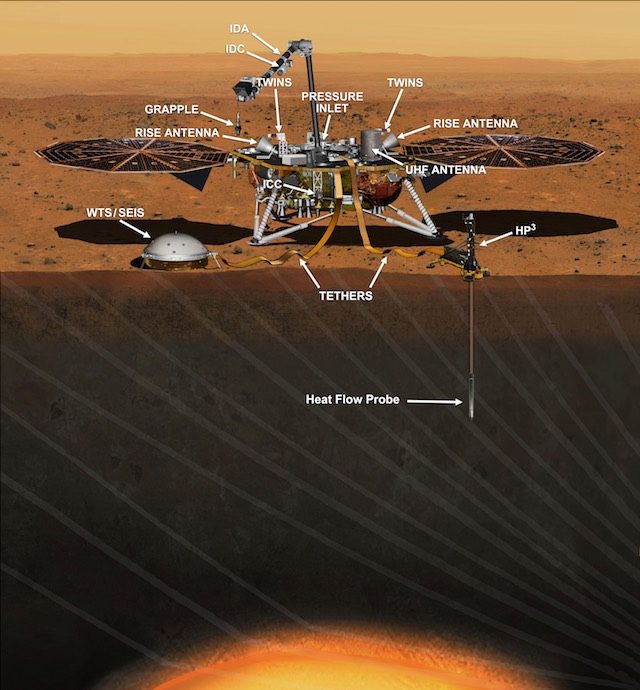SUMMARY
This is AI generated summarization, which may have errors. For context, always refer to the full article.

CHICAGO, USA – NASA announced on Tuesday, December 22, it has suspended the March 2016 launch of its InSight mission to Mars because of problems with a key scientific component.
The next launch window will not occur until around May 2018 and the US space agency said it does not yet know if it will be able to continue with the mission given budget constraints.
“We either decide to go forward, or we don’t, and that depends on cost data,” John Grunsfeld, associate administrator for NASA’s Science Mission Directorate in Washington, told reporters.
“I don’t think anyone has a question that in 26 months we won’t be able to solve the problem.”
It will take weeks, if not months, before NASA knows how much this delay will cost, and whether it will be able to come up with the funding to move forward with InSight. The mission has a total cost cap of $675 million and it has already spent $525 million.
The InSight lander – which stands for Interior Exploration using Seismic Investigations, Geodesy and Heat Transport – was set to delve deep beneath the Red Planet’s surface in order to discover how the solar system’s rocky planets formed.
“Learning about the interior structure of Mars has been a high priority objective for planetary scientists since the Viking era,” Grunsfeld said.
“We push the boundaries of space technology with our missions to enable science, but space exploration is unforgiving, and the bottom line is that we’re not ready to launch in the 2016 window.”
‘A hard blow’
The problematic instrument is a seismometer provided by France’s Centre National d’Etudes Spatiales (CNES), designed to measure ground movements as small as the diameter of an atom.
“It’s a hard blow,” CNES president Jean-Yves Le Gall told Agence France-Presse.
“This is one of the risks of the job. The good news is that our system was able to discover the problem when it was still here on Earth.”
NASA said the decision to delay follows unsuccessful attempts to repair a leak affecting the vacuum seal around three main sensors that is necessary in order to withstand the harsh conditions of the Martian environment.
A leak discovered earlier this year, that prevented it from retaining vacuum conditions, was successfully repaired, and the mission team “was hopeful the most recent fix also would be successful.”
However, the instrument once again failed to hold a vacuum during testing on Monday in extreme cold temperatures.
“It’s the first time ever that such a sensitive instrument has been built,” said Marc Pircher, Director of CNES’s Toulouse Space Centre.
“We were very close to succeeding, but an anomaly has occurred, which requires further investigation. Our teams will find a solution to fix it, but it won’t be solved in time for a launch in 2016.”
Manned Mars mission unaffected
The relative positions of the planets are most favorable for launching missions from Earth to Mars for only a few weeks every 26 months, with the next window running from March 4 to March 30.
While the InSight mission is important, Grunsfeld said the suspension “doesn’t affect the sequence of any other missions” or NASA’s commitment to exploring the Red Planet.
Plans to send a manned mission to Mars in the 2030s remain “on track,” NASA said.
NASA is currently also working on three Mars missions with the European Space Agency and plans to send another rover to the planet in 2020.
“I feel very bad for our partners in France who have worked so hard to get us to the point that we thought we would be able to make it to the 2016 launch,” Grunsfeld said.
“It’s not to be. But at least we’re not on our way to Mars and discovering a leak. We’re able to solve it here on Earth before we go.”
Despite the budgetary concerns, Grunsfeld expressed hope that the InSight mission would go forward.
“I really look forward to the time when we have a seismographic station on Mars and we learn about this marvelous planet and what’s inside,” he told reporters. – Mira Oberman, AFP / Rappler.com
Add a comment
How does this make you feel?
There are no comments yet. Add your comment to start the conversation.